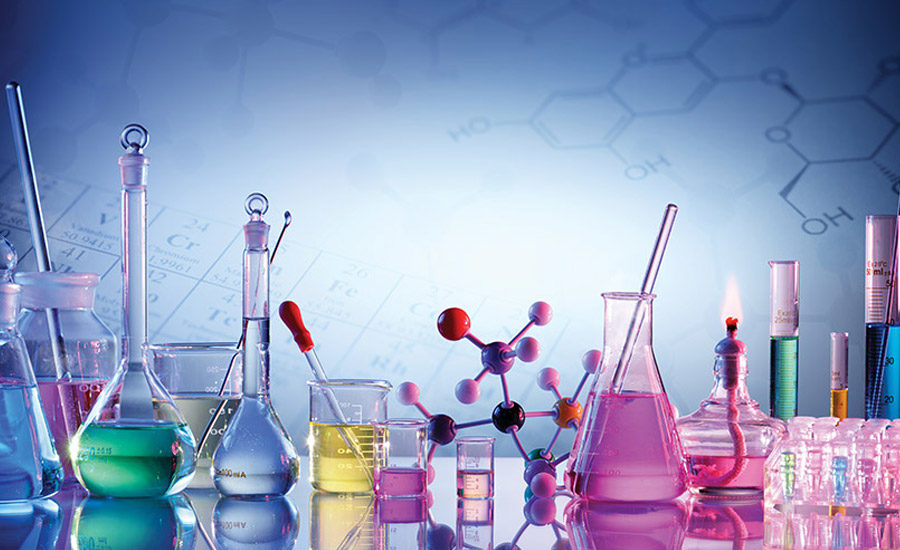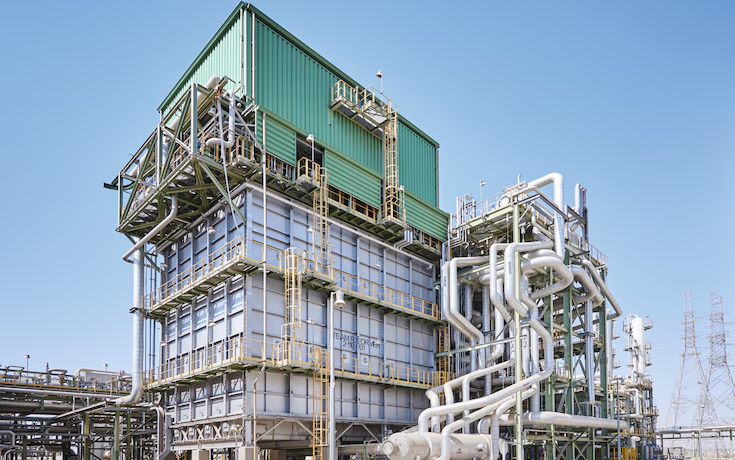
Recently, in the last few decades, the chemical and material industry has been coming out of the traditional concepts and moving to be sustainable. It is becoming a growing commitment to sustainable chemistry due to the fact that there is an immediate urge fostered by the rise in environmental concern, along with the reduction of carbon footprints, in order to develop long term sustainability within the industry. It means design, synthesis, and use of chemicals and materials in a holistic approach along the full life cycle of the designed materials and their potential environmental impact. As we go through this review, some of the major features of sustainable chemistry and how it's emerging as a dominant force for shaping the future of the chemical and material industry will be discussed.
1. Green Chemistry Principles:
Generally, the set of principles at the core of sustainable chemistry is referred to as green chemistry. These principles, first articulated in the 1990s by Paul Anastas and John Warner, provide a framework for the design of products and processes that minimize environmental impact. Green chemistry calls out for developing industrial processes using renewable feedstocks, avoiding hazardous substances, and designing products that produce less waste. These principles are increasingly utilized to prepare greener alternatives by manufacturers of such substances; these minimize the environmental impact classically associated with chemical production.
2. Renewable Feedstocks:
Conventional chemical processes largely anchor all chemical production on fossil fuels as feedstock, contributing heavily to carbon emissions. On the other hand, chemistry for sustainability increases the use of feedstocks from renewable sources such as biomass, agricultural residues, and even carbon dioxide. This reduces dependence on finite resources and helps in the development of a circular economy. The chemical and material industries can make use of the waste streams from other industries or agricultural by-products in devising a more sustainable and resource-efficient system.
3. Energy Efficiency and Green Manufacturing:
The chemical industry is a power-intensive process. Thus, coming under the ambit of green chemistry, the industry calls for the adoption of energy efficient technologies along with green manufacturing practices. Advanced catalysis, process intensification, and integration of renewable energy sources are now being imbued within sustainable chemical processes. Several manufacturers have invested in research and development to achieve better production methods by minimizing energy use and enhancing overall efficiency to minimize the ecological footprint from the production of chemicals and materials.
4. Circular Economy and Waste Reduction:
Sustainable chemistry, therefore, enables the transition to a circular economy in which products and materials are designed, keeping their recycling and reuse considerations in focus. It covers designing materials that allow easy disassembly, recovery, and reuse in production processes. By minimizing waste and maximizing resource efficiency, the chemical and material industry has great potential to contribute to an overall reduced environmental impact. Modern solutions offered by new chemical recycling and upcycling technologies become more and more popular in the treatment of plastic waste and other persistent pollutants.
5. Biodegradable and Eco-friendly Materials:
It is almost manic to deal only with the reactions of sustainable chemistry without touching upon the materials. Now, the industry sees development in biodegradable and eco friendly materials being created and put to widespread use. From packaging materials to polymers, companies are exploring alternatives that would naturally disintegrate and not become an element of the global load of plastic waste. Inventions within this space are responsible not only to the ecological consensus but also to the commercial drivers morphed in light of customer demand for sustainability.
6. Regulatory Landscape and Consumer Demand:
As governments worldwide have started to pay more critical attention to aspects of environmental protection, the regulatory regimes are increasingly becoming supportive and challenging for the industry related to sustainable practices in chemicals and materials. Strict environmental regulations enforce the companies to pursue cleaner, greener technologies. Besides, consumers are getting increasingly aware and influencing business strategies in the market. Companies prioritizing sustainability in their operations indeed tend to achieve not only regulatory requirements but also a competitive advantage in the market.
7. Collaborative Initiatives and Research:
This transition toward sustainable chemistry does, however, involve an all around collaboration between industries and academia and research institutions. Public private partnerships stimulate the invention and rapid development of technologies with sustainability, as well as joint research programs. Generally, the government, nongovernmental organizations, and companies invest in research and development to find new solutions, share best practices, and build up a knowledge base that will support the leap to widespread adoption of principles of sustainable chemistry.
8. Challenges and Future Outlook:
Undeniably, there are challenges in the way of sustainable chemistry. The industry still battles issues of cost competitiveness, scale up of greener technologies, and availability of skilled workers. Meeting these challenges demands ever greater investments in research, technological innovation, and collaboration. The momentum is, however, sustainable, and in the long run, the benefits from transitioning to sustainable chemistry far outweigh the associated challenges.
Conclusion:
Sustainable chemistry is both the driver and the pacing factor of the future of the chemical and material industry. The commitment to Green Chemistry principles, renewable feedstocks, energy-efficient processes, circular economy practices, and eco friendly materials all these depict a more sustainable and ecologically responsible industry. In the world of challenges, the commitment to environmental practices has to be done by the chemical and material industry. It is also the strategic direction toward sustainability concerning business in the long term. By embracing the guiding principles of sustainable chemistry, the industry could play a critical role in developing a resilient and sustainable future for all coming generations.
Trending Posts

Global Silver Nanoparticles Market
The global silver nanoparticles market was valued at $2.08 billion in 2020, and is projected to reach $4.1 billion by 2027, growing at a CAGR of ~17%

LNG Bunkering – Here is something you must know!
In the current scenario of growing pollution, companies are trying to adapt more and more sustainable approach that not only gives eco-friendly result

The Basic Pension Comes - Federal Cabinet Decides On the Pension Supplement
Financial security in old age is an issue that is causing stomach pains for more and more people in Germany. Low-wage earners fear the elderly. The ba

The Future of Artificial Intelligence
In recent years, the field of artificial intelligence (AI) has witnessed unprecedented growth and transformative advancements. As AI technologies

Sailing into the future with Autonomous Ships
Autonomous Vehicles (AVs) are the uproar of this era. After airways, thanks to the companies like Tesla, that people are now getting used to see drive

Rising Demand For Uninterrupted Power Supply Is Expected To Drive The Power Rental Market
Todays world is totally reliant on electric power. There are many things which are not manageable without electricity. Power rental is a concept where

Rapidly growing IT industry coupled with the trend of bringing your own device (BYOD) is expected to provide new opportunities for growth of Cloud Collaboration
Cloud collaboration is the process of sharing and co-authoring the computer-based work through cloud technology

Factcheck on UV Disinfection for COVID-19
Many regulatory authorities and bodies believe that UV disinfection technologies can play a role in a multiple barrier approach to reducing the transm

The Global Ventilator Market Grows at a CAGR of 7.75 %
The Global Ventilator Market, which was at $688 million in the year 2016, is about to double by the year 2025, and reach a value of $1,347 million. Th

Vaccination: Vaccination Against Measles is Now Mandatory in Germany
The subject of compulsory vaccination has always heated peoples minds and caused emotionally charged discussions. The latest law in this area - the ob
Recent Posts

Growth and Future Trends of the Global In-Line UV-Vis Spectroscopy Market
In-line UV-Vis spectroscopy is a powerful analytical tool widely adopted in various industries for real-time monitoring of chemical and biological processes. This market is experiencing robust growth due to its applications in pharmaceutical.

Understanding the Growth Dynamics of the Premium Luggage Market
The market for premium luggage has grown massively over the years. This is attributed to several factors, including a change in consumer preference, increase in disposable incomes, and an overall rise in international travel.

Global Potassium Sorbate Market: Growth and Forecast
The Global Potassium Sorbate Market has gained significant traction due to the rising demand for preservatives across various industries, especially in food and beverages. Potassium sorbate, a salt of sorbic acid.

Global Venturi Masks Market Growth and Forecast
Venturi masks, also known as air-entrainment masks, play a crucial role in delivering a precise oxygen concentration to patients, particularly those suffering from chronic respiratory conditions such as COPD (Chronic Obstructive Pulmonary Disease).

Global Venous Thromboembolism (VTE) Therapeutics Market: Overview, Growth, and Forecast
Venous thromboembolism (VTE) is a critical medical condition including deep vein thrombosis and pulmonary embolism. In fact, it is one of the preventable causes of death in the hospital environment. It has experienced a substantial upsurge.

Global Vein Illumination Device Market: Growth and Forecast
The global vein illumination device market is experiencing significant growth, Due to a growing demand for minimally invasive procedures and an increase in chronic diseases, not to mention development in medical technology.

Global Vasculitis Treatment Market: Growth and Forecast
Vasculitis represents a group of disorders involving inflammation of blood vessels. It can affect parts of the body such as the skin, kidneys, lungs, and joints, and without proper treatment it may cause severe morbidity.

Global Fired Heaters Market: Growth and Forecast
The global market for fired heaters is growing at a rapid pace due to increased demand from major industries such as the oil & gas, chemical, and petrochemical sectors. Fired heaters are among the most crucial components of process heating systems.

Global Gas Flares Market Growth and Forecast
The growth in oil and gas production, environmental regulations, and a need for an effective waste gas management system are driving the global gas flares market. Gas flares are a crucial equipment in the oil and gas industry.

Global Steam Reformers Market: Growth, Trends, and Forecast
The steam reformers market is witnessing significant growth due to increased demand for hydrogen in industries like chemicals, refining, and fertilizers.
